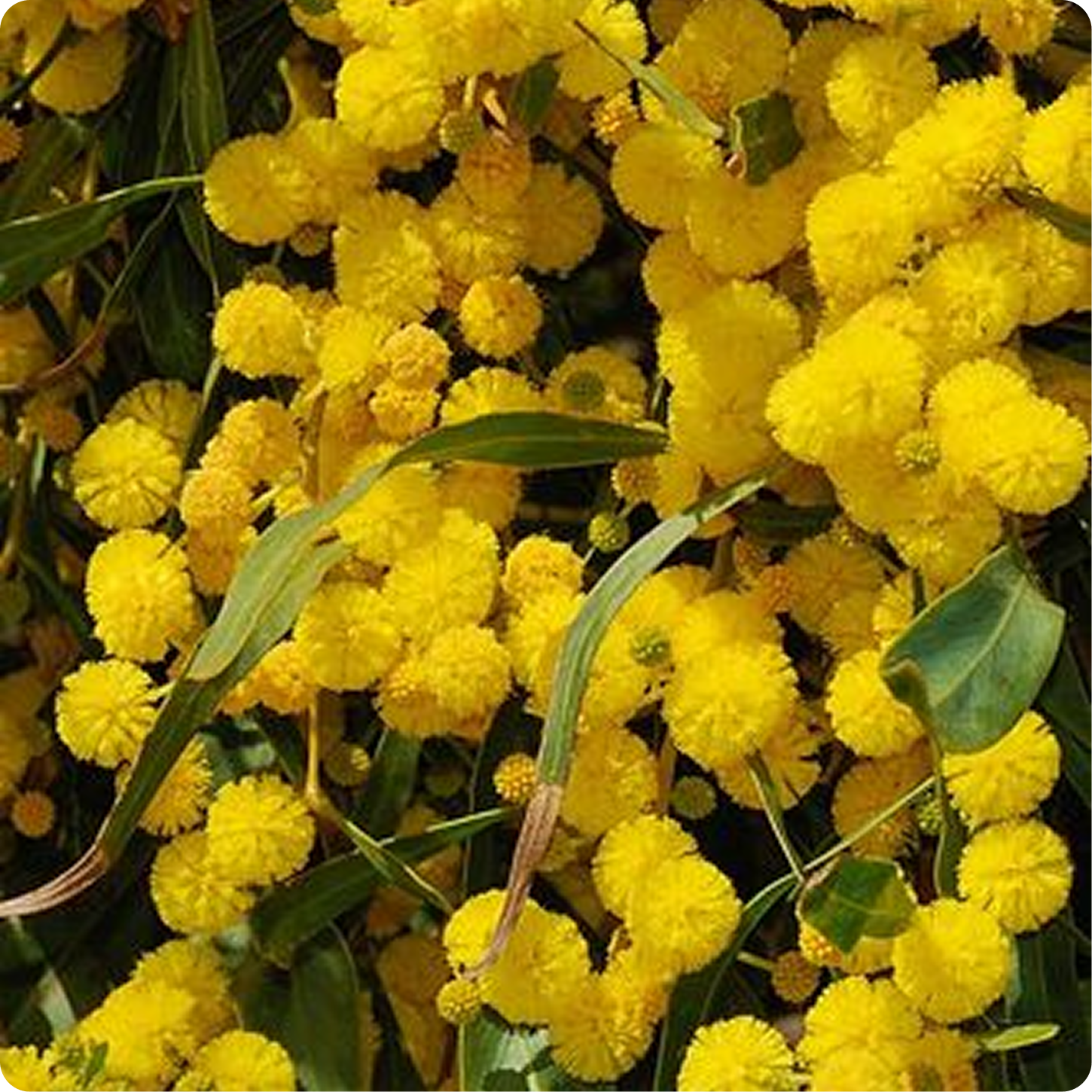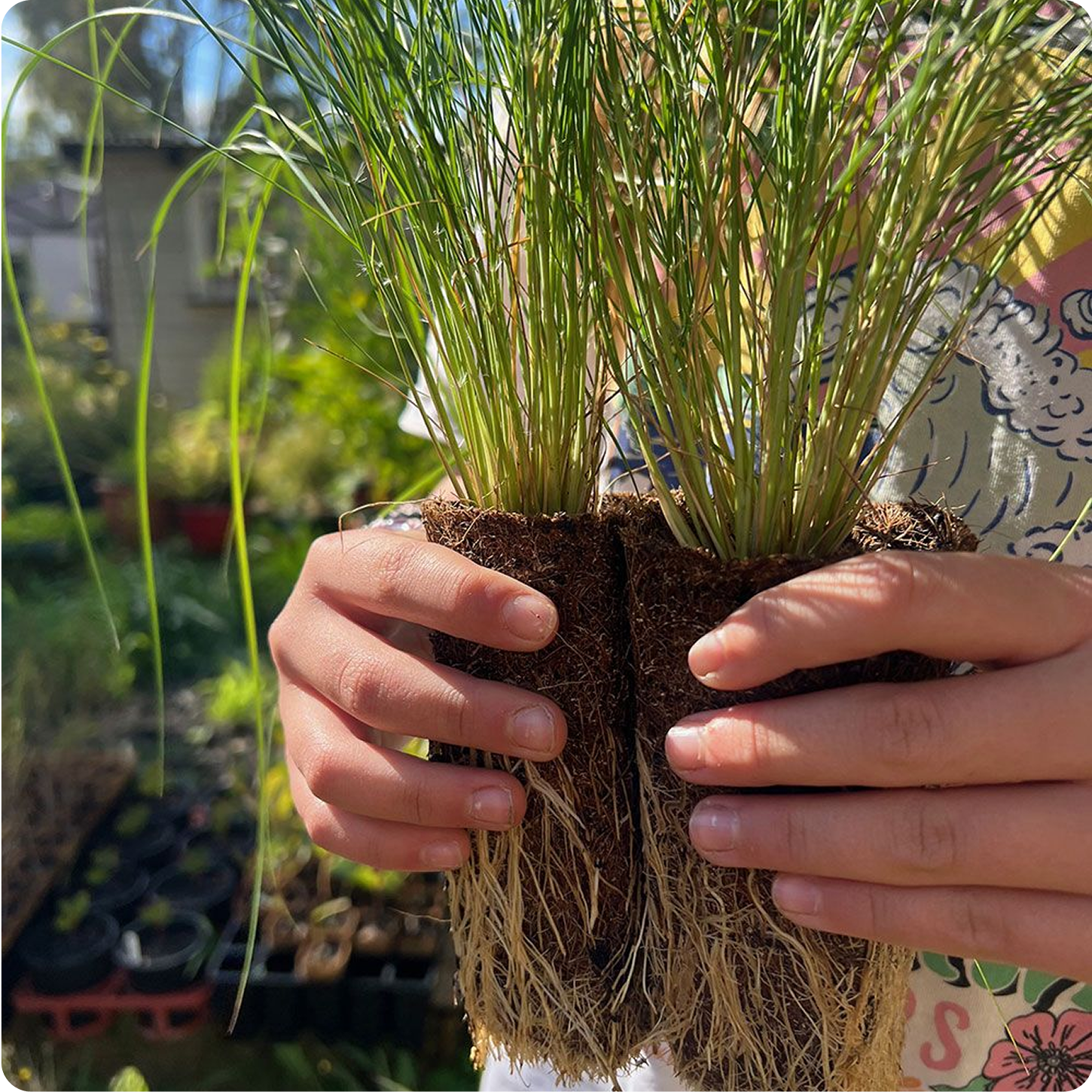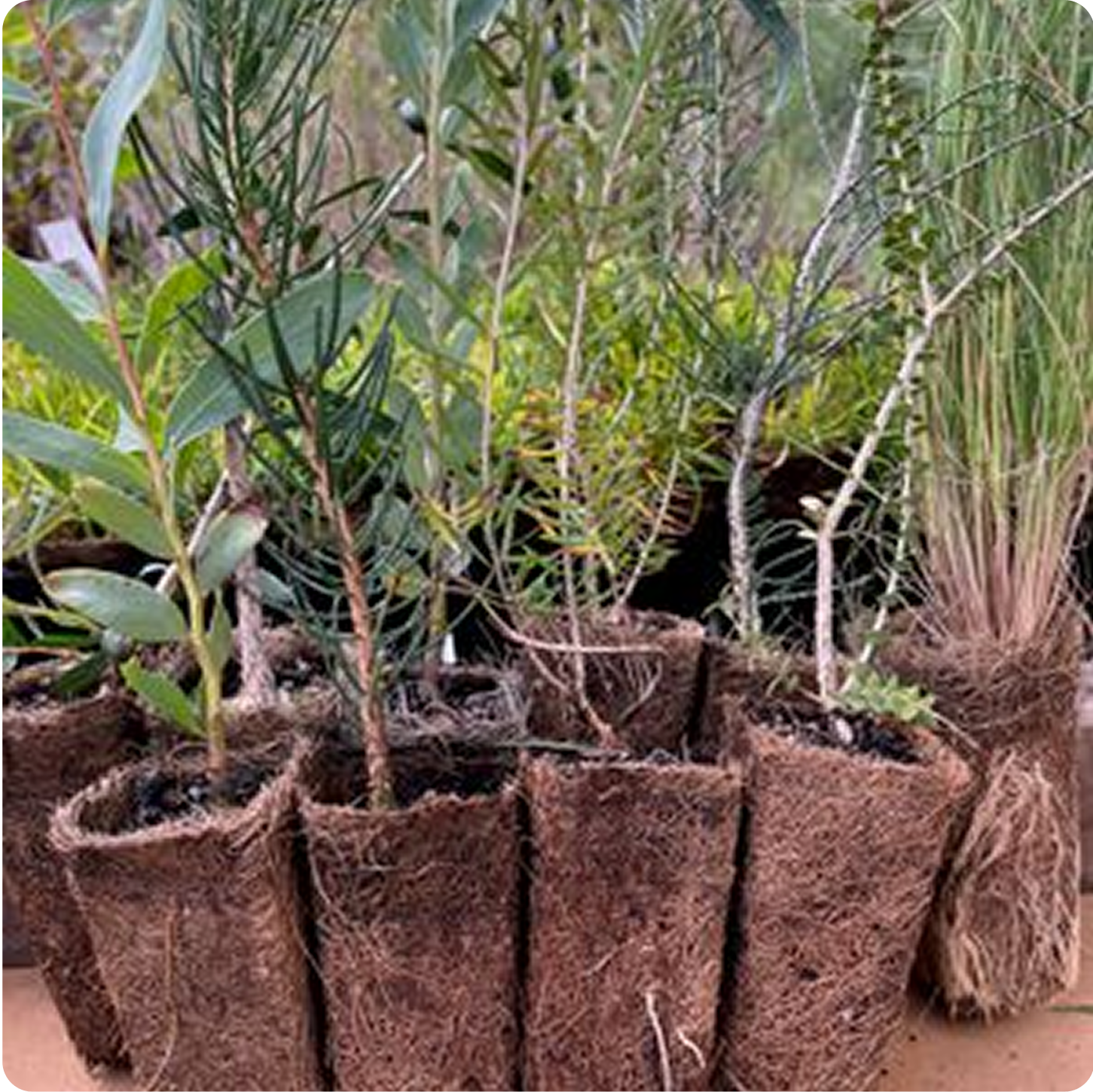Screening Plants
Need a bit of privacy? These fast-growing, leafy legends are perfect for screening out neighbours, fences, or just making your space feel more lush and enclosed.
Sort by:
43 products
43 products
The Sandhill Honey Myrtle, or Melaleuca adnata, is an embodiment of resilience and natural beauty, integral to the Australian environment. Flowers bloom in stunning shades from creamy-white to yellowish, drawing in bees and birds, creating a vibrant ecosystem. This plant is a master of adaptation, thriving in various landscapes, serving as a natural barrier against wind and erosion with its diverse growth from a lush shrub to a small tree.
This species is crucial for soil stability and wildlife sanctuary, enhancing your space's ecological value.
Melaleuca nesophila commonly known as Showy honey-myrtle because of it's long flowering time with beautifully pink to purple pom-pom flowers. Attractive ever-green aromatic foliage growing up to 4 metres.
A native that ticks all the boxes in terms of providing resources for birds and insects, while adding beauty into your garden. The showy honey-myrtle is also used for screening.
Allocasurina campestris is a dense, erect shrub that grows to 1-3 metres. It has similar foliage to other she-oaks but with a more upright character, which makes it an interesting feature in your garden. It grows in gravelly sandy soils so is perfect in a difficult area.
Works well for screening, wind breaks and part of a habitat corridor, providing shelter and resources for native birds and other animals.
Eucalyptus wandoo is a long-lived and iconic WA tree renowned for its smooth, pale grey to white bark and strong, durable hardwood. Reaching heights of 3 to 25 metres, it typically grows in the SW wheatbelt and woodland regions, where it plays a crucial ecological role by providing habitat and food for birds such as the black cockatoos.
It has glossy green leaves and creamy white flowers, which appear in summer, providing a life line to bees through our hot summers.
Erect, compact shrub growing to 2.5 metres, the Robin redbreast bush, or Melaleuca lateritia, has soft, narrow green foliage and thrives in sandy well-drained soils. Admired for its reddish orange bottlebrush flowers that bloom from spring through summer, which often attract nectar-loving birds like honeyeaters.
It grows in the Perth area and surrounds, is low maintenance and drought tolerant once established. Great for habitat, attracting pollinators and all local gardens.
Melaleuca cardiophylla, also known as Tangling Melaleuca, is a charming and resilient WA native shrub that brings year-round interest to any garden. With its slightly prickly, heart shaped foliage and profusion of creamy white flowers in spring and summer, it creates a visual display while attracting birds, bees and beneficial insects.
Naturally suited to sandy and gravely soils, this hardy species thrives in full sun and tolerates drought, coastal conditions, and light frosts. It is a dense, spreading shrub growing to 2m.
Perfect for native gardens, screening, hedging and habitat for local fauna.
Kunzea glabrescens, also known as spearwood, is a stunning and hardy medium shrub (2-4m) that makes a striking addition to your garden. With its fine, aromatic foliage and soft yellow bottlebrush like flowers that bloom in spring, it attracts pollinators like bees and butterflies.
Naturally found in the Perth and surrounding areas, it thrives in well drained soils and adapts well to coastal or inland conditions.
Ideal for native landscaping, screening, erosion control, Kunzea glabrescens offers low-maintenance beauty and ecological benefits.
Eucalyptus utilis, commonly known as Coastal moort, is a small, hardy mallee growing from 2-15m. It has a short trunk, branches with a spreading habit, smooth grey bark that peels off in ribbons revealing pale coppery bark beneath.
In late spring to summer it produces creamy white flowers that attract birds, bees and other pollinators. Adult leaves are thick, a shade of glossy olive green on both sides, egg-shaped to lance-shaped.
Eucalyptus utilis is highly tolerant of coastal winds, poor sandy soils, and drought, making it an ideal choice for coastal gardens, shelterbelts, wind breaks and habitat corridors.
Acacia cyclops, commonly known as coastal wattle or red-eyed wattle, is a hardy dome shaped shrub mostly found in coastal regions. It usually grows to a height of 4 metres but can get taller.
Its easily recognised by its bright yellow flowers, which are produced over a long time, from winter up until summer, and distinctive seed pods filled with seeds surrounded by a fleshy red aril - hence the name 'red-eyed'.
Acacia cyclops loves Perth sandy soils, where it is valued for its resilience and ability to improve soil fertility through nitrogen fixation.
Melaleuca hamulosa known as the "Creekline Honey Myrtle," is a shrub or small tree growing to usually 5 metres, with lance-shaped leaves and white bottlebrush-like flowers. It attracts pollinators like bees and birds.
This plant serves various purposes, including ecological roles such as providing habitat and food for wildlife, and ornamental use in landscaping and screening. It aids in land rehabilitation and erosion control, particularly in areas prone to erosion.
It thrives in wetter environments, like creek lines and swampy areas. Adaptable to various soil types, it contributes to soil health and stability.
Eucalyptus drummondii, or Drummond's gum, is a compact and elegant mallee making it an excellent choice for Perth gardens. Usually growing to 3-7m, it can be grown in a small garden or several planted to fill a sunny spot.
It features smooth, mottled bark and attractive, blue-grey foliage, complemented by creamy/white flowers that start blooming in spring. This species is well suited to Perth's sandy soils and climate, thriving in full sun and drought tolerant once established.
Compact and attractive, Eucalyptus drummondii is ideal for native gardens, habitat planting or as a feature tree.
Enhance your garden with the Grass-leaf Hakea (Hakea multilineata). This striking plant is perfect as a feature in mixed native landscapes, showcasing vibrant pink flowers and attractive foliage. Growing to 3-5m.
Create a natural screen or shelter with the Grass-leaf Hakea. Ideal for parks and reserves, this plant forms a dense barrier that provides privacy and protection. Its well-drained soil requirement ensures it thrives with minimal fuss, making it a reliable choice for diverse landscapes.
This plant attracts nectar-eating birds and insects, enriching your garden's ecosystem. Its flowering period offers a continuous food source for native wildlife, like nectar loving birds while the seeds are eaten by black cockatoos.
Acacia hemiteles, commonly know as the Tan wattle is a 2 metre tall multi-branched shrub with lovely long green grey leaves. With lots of brown flower buds in late winter which open into yellow balls, followed by curly seed pods. The local birds and insects love this shrub! Fast growing and perfect for diversity on your property.
Bring the elegance of the Yuna Mallee, Eucalyptus jucunda to your garden. This multi-stemmed mallee features creamy white to pale yellow flowers and glossy green leaves. Its moderate to fast growth rate ensures quick establishment, perfect for creating a lush, vibrant landscape, growing to 7m.
Yuna Mallee thrives in well-drained sandy, loamy, or gravelly soils, adapting to a range of pH levels. It is highly drought-tolerant and withstands light frost.
Beyond its ornamental appeal, Yuna Mallee plays a vital ecological role. It attracts birds, insects, and other wildlife, promoting biodiversity. Ideal for windbreaks, erosion control, and land restoration projects, this plant is a valuable addition to any environmentally-conscious garden.
Discover the Sand Wattle Myrtle (Melaleuca thymoides), known for its creamy yellow brush flowers and resilient nature. Growing from 1-2 metres it will fit into most gardens. Flourishing in the Perth hills area, this low shrub is a testament to both beauty and endurance, with its lance-shaped aromatic leaves and distinctive branches bringing a unique charm to landscapes.
It thrives in diverse conditions, from sandy soils to wet depressions, making it a versatile addition to eco-conscious landscapes. By integrating the Sand Wattle Myrtle into your garden, you're aiding local wildlife and contributing to conservation efforts.
As it flourishes, your outdoor area becomes a haven for birds and insects, enriching your connection with nature.
The Jam Wattle, Acacia acuminata, is a hardy, fast growing small tree up to 3 metres. Common around Perth and a part of our natural landscape.
Thriving in well-drained soils, including gravelly and loamy types, also drought tolerant.
It's timber has a raspberry jam like aroma when cut, which is where it's common name comes from. It is also well known for its golden yellow, rod shaped flowers in late winter to spring.
It plays a crucial role in supporting local biodiversity, especially a specific mistletoe that attracts mistletoe birds, bees, and butterflies, turning gardens into lively ecosystems.
Melaleuca viminea, also known as Mohan, is a graceful, weeping shrub or small tree (upto 10m) ideal for native gardens and landscape design. It's fine arching foliage, papery bark and creamy white bottlebrush flowers create a soft appearance, blooming in spring and summer.
Highly adaptable and fast growing. Its low maintenance needs, and is excellent for screening, and its ability to attract birds and other pollinators make it a standout choice for your property.
Transform your garden with the Melaleuca subtrigona, a stunning small shrub growing to 2 metres. With its dazzling pink/purple flowers blooming from spring to summer, grows in clay, laterite, and sandy soils, it's a resilient and beautiful addition to your garden.
Attract a variety of birds and butterflies to your garden with the Melaleuca subtrigona. This shrub is a favourite among honeyeaters and insect-eating birds, providing a natural habitat and dynamic ecosystem.
Melaleuca atroviridis is a large shrub or small tree, reaching heights of up to 12 metres, features dark, flaking papery bark and upward-pointing leaves. Its cream or yellow flowers bloom in dense spikes, from December to February.
The Melaleuca atroviridis produces masses of creamy white bottlebrush-like flowers which are highly attractive to bees and other pollinators.
Its dense foliage makes it suitable for screening, windbreaks, habitat corridors also water wise gardens, habitat plantings and low maintenance landscapes.
Discover the Glowing Wattle (Acacia celastrifolia), it has golden prolific flowers in late winter into spring, large round leaves and is found in all bush land and gardens in the Perth area.
Flourishing in sandy to gravelly soil types, its dense foliage and deep roots not only create a lush landscape but also support a sustainable environment.
The Glowing Wattle plays a crucial role beyond aesthetics. It serves as a good screening plant, enhances soil quality through nitrogen-fixation, and serves as a haven for wildlife.
Showing 40/43













































